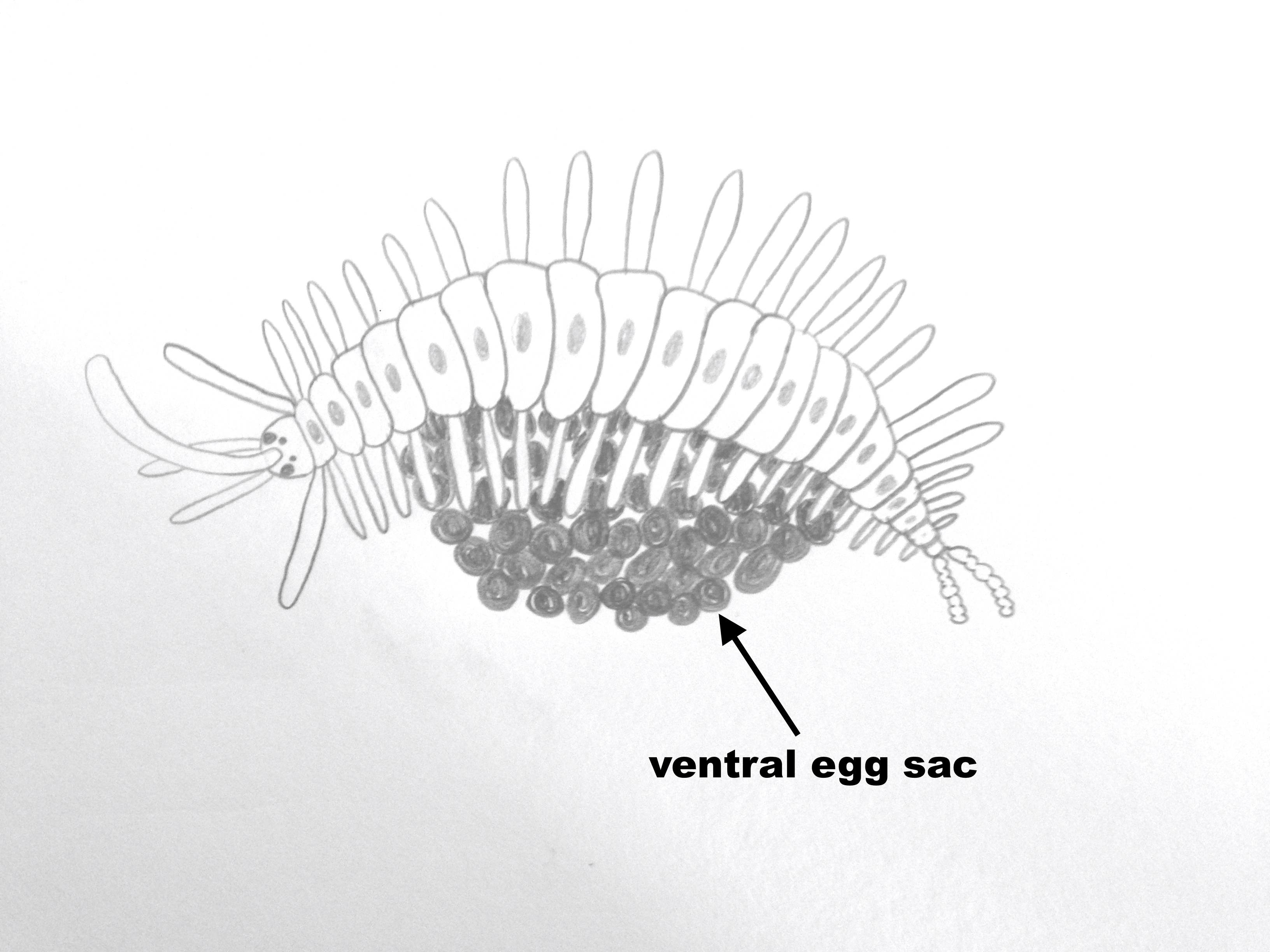Reproductive Behaviour
There are a number of different ways a stolon can behave. A common behaviour however, is that of a period of active swimming through the pelagos after detachment from the stock. This behaviour allows stolons to form a swarm with other members of its species (Franke, 1999). Upon aggregation with conspecifics, an incredible display of biological fireworks can take place, though this depends on the species. This firework show involves all stolons synchronously erupting, broadcasting their gametes in a mass spawning event that results in external fertilisation and the consequent production of larvae (Franke, 1999). This behaviour is common within the sub-families Eusyllinae and Syllinae (Franke, 1999). Alternatively, and in the case of M. pachycera, aggregations of conspecifics may result in males and females mating, after which the females externally brood the fertilised eggs (Figure 1; Aguado et al., 2012). This behaviour occurs in species within the sub-families Exogoninae and Autolytinae (Franke, 1999). Other derived reproductive modes such as viviparity (live birth) and parthenogenesis (true cloning) occur throughout the Syllids (Franke, 1999). As they are not exhibited in M. pachycera however, they will not be discussed here.

|
|
Figure 1 A female Myrianida pachycera stolon brooding eggs in a ventral egg sac. Illustration adapted from Shiedges, 1979. Illustration not to scale.
|
While mating behaviour has not been recorded for M. pachycera, it is possible that it is similar to that of other Myrianids, whereby the male swims closely around the female, covering her in strings of sperm (Rouse & Pleijel, 2006). The female then initiates brooding behaviour. External brooding in M. pachycera most likely occurs as it does in all other Autolytines, and that is within a ventral sac attached to the female stolon’s body (Franke, 1999; Aguado et al., 2012). Autolytine eggs are relatively large and yolk-rich (Franke, 1999), suggesting that they do not receive any nutrients from their carer during incubation. Within Autolytinae, egg incubation lasts only one to two weeks, and larval development upon hatching is short or even fully suppressed (Franke, 1999). Once the development stage is over, the newly developed adult will settle on the benthos, ready to begin the reproductive cycle anew. |